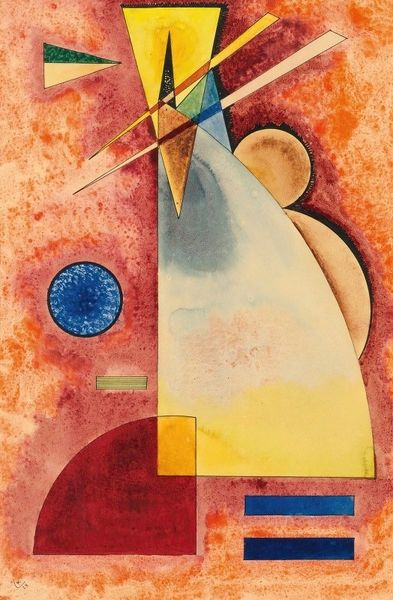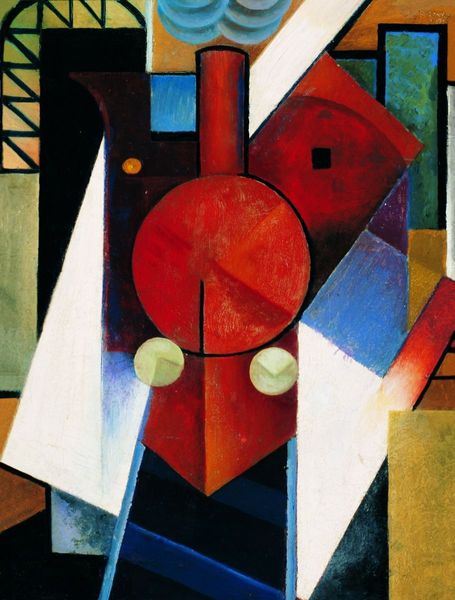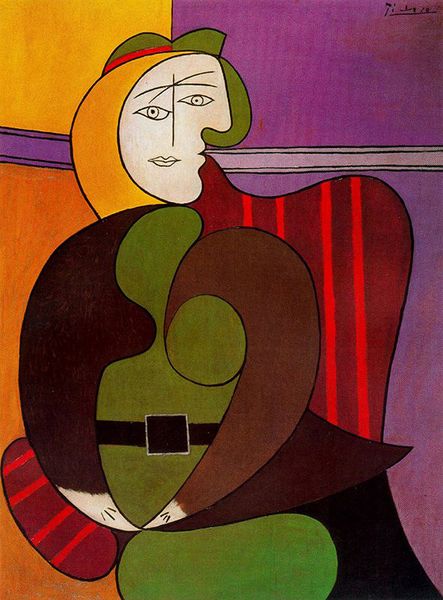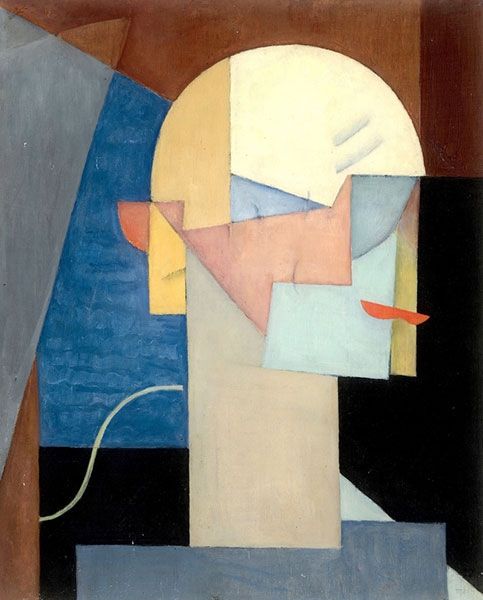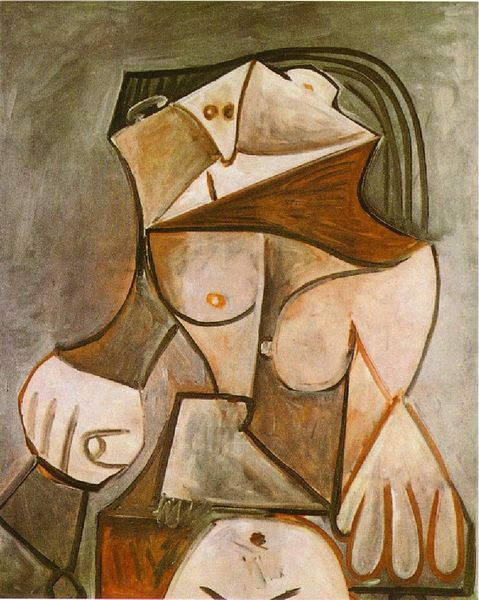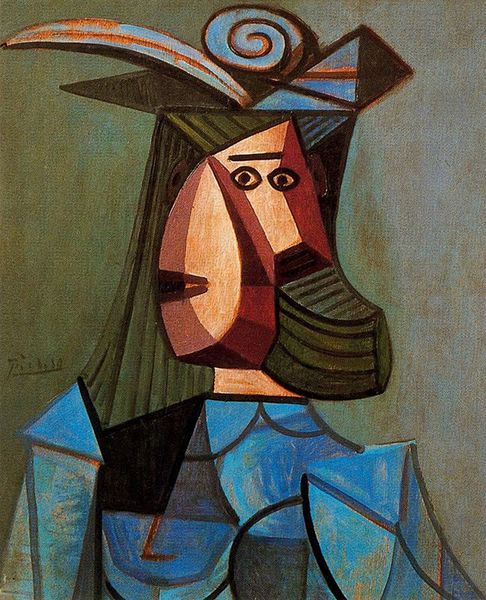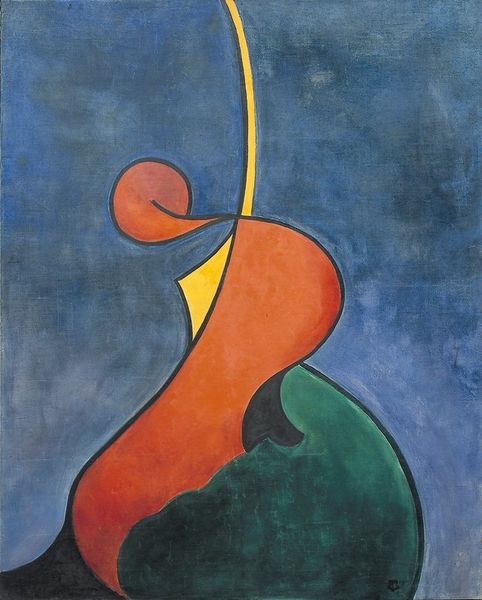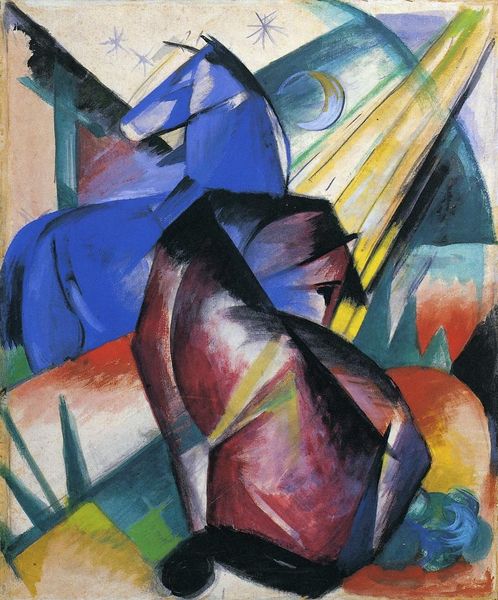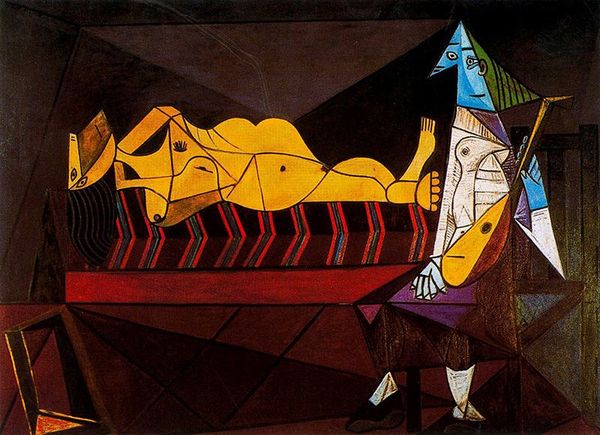
painting, oil-paint
#
abstract painting
#
painting
#
oil-paint
#
figuration
#
geometric
#
abstraction
#
surrealism
Copyright: Oscar Dominguez,Fair Use
Editor: This is “Mujer,” painted by Oscar Dominguez in 1941. It's oil paint on canvas, and it strikes me as both elegant and unsettling. The figure seems to be deconstructed, almost architectural. How do you interpret this work? Curator: Dominguez painted this during a tumultuous time, right? 1941—World War II was raging. When I look at “Mujer,” I see more than just a fragmented figure; I see a visual representation of the fractured identities and societal anxieties that emerged from conflict. Doesn’t the geometric abstraction speak to the breakdown of traditional forms and values? Editor: Absolutely. The way the body is broken down into these shapes… it’s almost violent. Do you think that has anything to do with Dominguez's own identity as a gay man in a time of social persecution and marginalization? Curator: Definitely. I think we can see how his intersectional experience shaped his artistic perspective. Consider how Surrealism allowed artists like Dominguez to explore the subconscious, revealing suppressed emotions and challenging societal norms. Is the 'mujer' not a disruption of the expected? It makes me consider if we might view the painting as Dominguez expressing not only collective societal fractures, but also that of his personal self? Editor: That’s a perspective I hadn’t fully considered, how Surrealism, at its core, questions traditional viewpoints and gives marginalized people a channel to communicate. I now see "Mujer" as far more than an abstract painting; it's a political statement, really. Curator: Precisely. And situating his work within this context helps us understand its complexity and relevance to today's ongoing struggles for identity and social justice. It reframes our whole viewing of it. Editor: This has completely transformed my understanding. It is fascinating to look beyond just shapes to see political, personal, and historical statements woven in. Curator: I am glad to see we were able to open this piece further, and perhaps open ourselves to it. It encourages dialogue, doesn’t it? And dialogue is exactly what art should do.
Comments
No comments
Be the first to comment and join the conversation on the ultimate creative platform.
